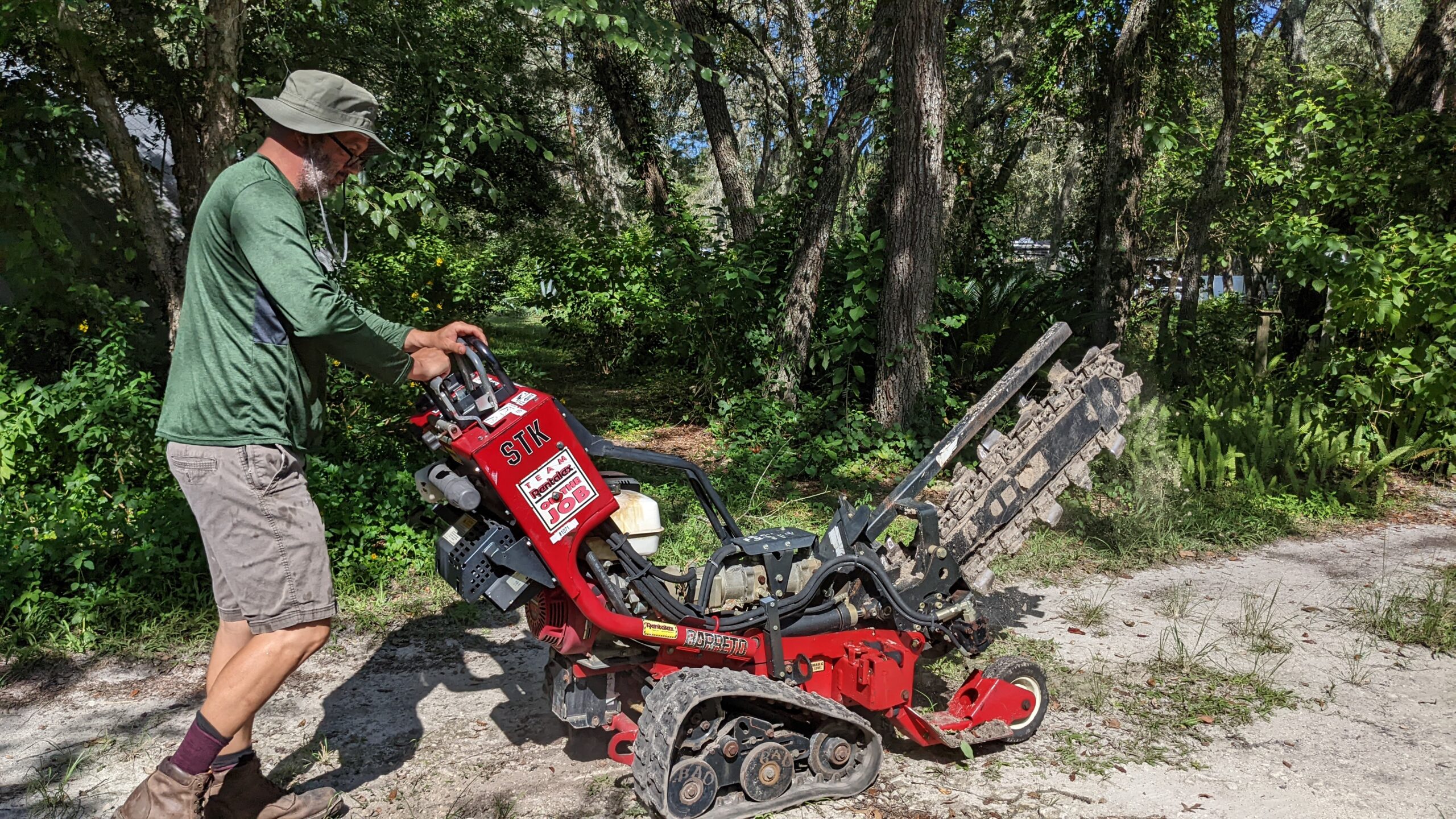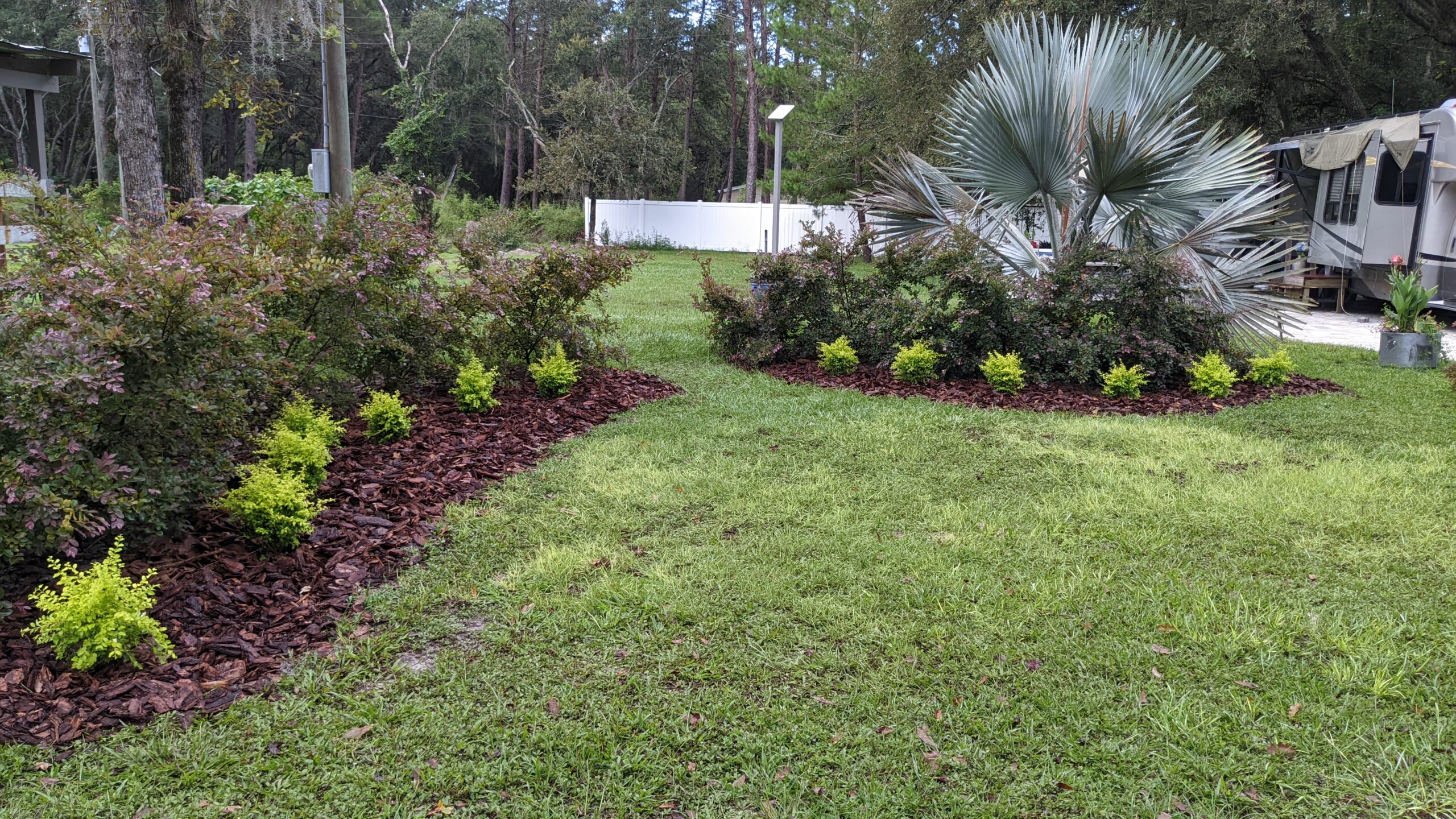Many of the plants in Florida’s zone 9 gardens welcome the respite of cooler winter temperatures. However, there are several plants sold in local nurseries that need to be protected when frost threatens. Be sure to cover them during the day when the ground is relatively warm. The frost we received on 1/23/22 made the grass look like it had a dusting of snow. Be cautious because the weather reports said it would only get to 38 degrees yet it was at least 33 and probably dipped below freezing.
I use tarps and huge plastic plant buckets, towels, barrels, even garbage cans and rain barrels. Of course, you can use blankets, curtains and sheets or purchase freeze cloth. The one item you’ll be told not to use is sheets of plastic but if you don’t have anything else and it’s a choice between plastic or nothing, it may be used as a last resort. If you must use it, please do what you can to avoid the plastic touching the leaves (drape it over some other structure like a table or frame of some sort).
I water my plants several hours before a frost so they have enough internal water and structure to withstand the cold. Also, in my head, it takes more energy for water to freeze allowing at least another degree of warmth.
The most important thing to know is that the covering must touch the ground. This helps keep the geothermal heat under the blanket. If your blanket isn’t long enough, get another and wrap around the plant with a tie or bungy assuring there are no gaping gaps.
I have seen some people, especially with tropical fruit trees, devise pvc pipe structures they tarp over. I really don’t have the want to do that but I have been known to put a chair or table over plants and blanket that.
Funny, I have some outdoor curtains on the pergola that perform double duty as plant blankets since they’re outside all the time anyway! I was about to throw out a shabby old bonded leather jacket but hung it on my staghorn fern instead! Update: the freeze on 1/29 was so cold that I actually peeled both staghorns off the oak trees and brought them in the house.
So, what plants need protection?
I would say all baskets and potted plants need to have, at a minimum, the pots blanketed. Potted plants succumb easier than plants under a layer of much and earth. I have a cheap plastic greenhouse I dolly big plants to when temps drop. It’s nice and cozy in there (relatively speaking). When temps threaten to dip below freezing, I put a smaller heater in to keep my plants toasty and humid.
Tropical plants. Any plant associated with the word “tropical” is a candidate for protection. These are bananas, hibiscus, gardenia, firecrackers, oyster plants, jathropa, allamanda, ti plants and crotons, ixora, roebellini plams, yesterday today and tomorrow, rubber tree ficus, Christmas palms (adonina) and many other palms… especially if they’re young. Others include bougainvillea, arbicola, pentas, bird of paradise (white and orange) tibouchina (princess flower), jasmine and mandevilla.
This is my first winter with angel trumpet seedlings that definitely went downhill fast the first night in the 40s. I keep them in the greenhouse away from the plastic and have brought them in the house when it’s really cold. Seems to me this specific variety will have to stay in a pot or I’ll have to dig them up and pot them when it gets too cold.
Coleus. I dig up my coleus, put them in a massive plastic pot, and stick them in the greenhouse.
I’ve been lucky with my Red Sister Ti plants. Typically, I just cover them but they were so massive this year that I wound up cutting all the branches off. After sticking 50 of them in dirt, I placed them in the greenhouse.
Other annual type plants that may not survive a frost without protection are impatiens, vinca and begonias.
Summer/warm season vegetables. This includes tomatoes, eggplant, peppers, cucumbers, okra, and zucchini among others.
Anything with new growth. This is why most of us don’t prune in the fall. New growth on plants is more susceptible to frost damage.
Plants in poor health.
Plants that will die to the ground but will likely come back in the spring
My jathropa, lantana, bougainvillea, pagoda flower, firespike, hibiscus, dianella, allamanda, and gingers all die back but return when the warmer weather approaches. Others that have a tendency to do this are bananas, plumbagos, bleeding heart, jasmine, fire spike and fire bush, butterfly clerodendrum, blue sky vine, Mexican petunia, sanchezia, wedelia, and blue daze. These year, even some of my thryallis leaves seemed to burn.
Remember
Avoid using plastic sheets
Cover plants completely to the ground
Uncover them as soon as the temperature rises above freezing so the plants can get light, water, and fresh air!
What plants don’t I worry about?
Pretty much everything else ;-).
Oleanders, agave, aloe, coonties, bromeliads, and sagos, although they look tropical, need much colder temperatures than I have experienced in my twenty years in Pasco county. I actually have 20-year-old spider plants outside that I have never brought in nor have i covered. Loropetalum, tea olives, camellias, texas sage, firebush, indian hawthornes, muhly grass, bottlebrushes, turk’s caps (leaves may burn but it should be fine), thryallis, golden dew drops, even my bismark and pindo palms do fine.
I have a jacaranda that is twenty feet tall and never flowers for me but, while its sister didn’t survive the first year, this one has been growing fine for 20 years.
Bulbs. Amaryllis, crinum, agapanthus, lilies, gladiolus etc. can stay in the ground. I keep mine covered in pine bark mulch and leaves.
Cold tolerant palms: chinese fan palm, bismark, washingtonia, and pindo/butia palms are fine. I planted three queen palms but two smaller ones died the first year (a horse may have eaten one). However, the larger one has survived for 15-years.
And, anything that grows up north should be fine. These include roses, azaleas, nandina, mahonia, rose of sharon, banana shrub (magnolia) and oak leaf hydrangeas.
After Frost Clean-up
I try to keep all of my frost protection supplies in one place so that I can easily grab everything and get to work by 4:30 (so I may finish before dusk).
A word of advice: Don’t cut the damaged leaves and branches back until danger of the last freeze has passed…St. Patrick’s Day March 17th. Trimming plants will prompt them to put out new growth that will be vulnerable to frost until mid-March.




